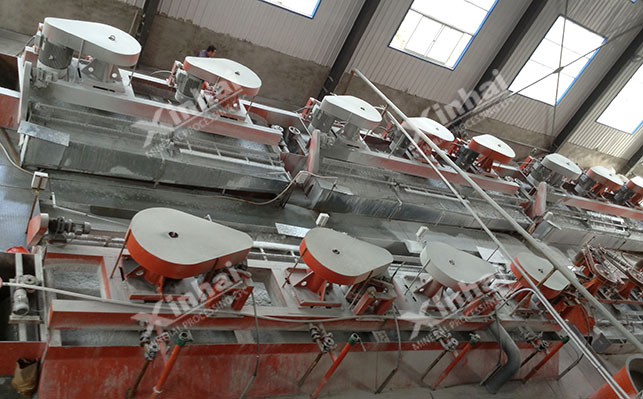
15311826613
Click to add WeChatIn addition to being used to make phosphate fertilizers, phosphorus resources are also important chemical raw materials for the production of yellow phosphorus, phosphoric acid, organic phosphorus and other phosphorus products. It is the material basis for ensuring food safety and fine phosphorus chemical industry, and plays an important role in economic and social development. With the exhaustion of rich phosphate ore resources, medium and low-grade phosphate ore has become the focus of research. The commonly used phosphate ore dressing method is mainly flotation. Let's learn about the flotation process of phosphate ore.
Flotation technology is widely used in the process of phosphate ore sorting. The mineral composition of phosphate ore is relatively complex, and the floatability difference between useful minerals and gangue minerals is small, which is more conducive to flotation technology. Commonly used phosphate ore flotation processes are: positive flotation, reverse flotation, positive-reverse flotation, reverse-positive flotation and reverse-reverse flotation (double reverse flotation) process.

Directly enrich the useful minerals containing phosphorus in the foam product from the ore. This method is suitable for silicon phosphate ore or apatite ore that is easy to select. After the phosphate ore is processed by the grinding equipment to the degree of monomer dissociation, the mineral is floated out by adding appropriate inhibitors and collectors at one time to obtain phosphate concentrate.
This process needs to be carried out under weakly acidic conditions, which can suppress the phosphate components in the ore and keep the useful minerals in the flotation tank. Gangue minerals enter the foam with bubbles under the action of collectors. The reverse flotation process is simple and has high efficiency in separating dolomite, so it has been widely used in the mineral processing industry.
Phosphate ore flotation is essentially mainly the separation of collophane ore from quartz and dolomite. When the phosphate ore contains a large amount of dolomite and a large amount of quartz, it is necessary to combine direct flotation and reverse flotation processes to treat the ore to obtain excellent flotation indicators. At this time, direct-reverse flotation and reverse-direct flotation processes appear. Under normal circumstances, these two processes can obtain better flotation effects in treating silico-calcium (calcium-silica) collophanite. According to different ore types, direct-reverse flotation process or reverse-direct flotation process is selected.

Phosphate ore double reverse flotation process is generally used in silico-calcium phosphate ore with high dolomite and quartz content. Usually, the inhibitor H3PO4 is used to suppress the phosphorus-containing components, so that the carbonate minerals float out, mainly to remove MgO from the ore. Amine collectors are used to reverse float impurities such as feldspar and quartz on the concentrate in the tank to achieve the purpose of desiliconization.
The above is an introduction to the flotation method of phosphate ore. In actual ore dressing plants, the ore properties of phosphate ore are different, so there are also differences in ore dressing methods. It is recommended to conduct ore dressing tests and design suitable phosphate ore dressing process methods through analysis.